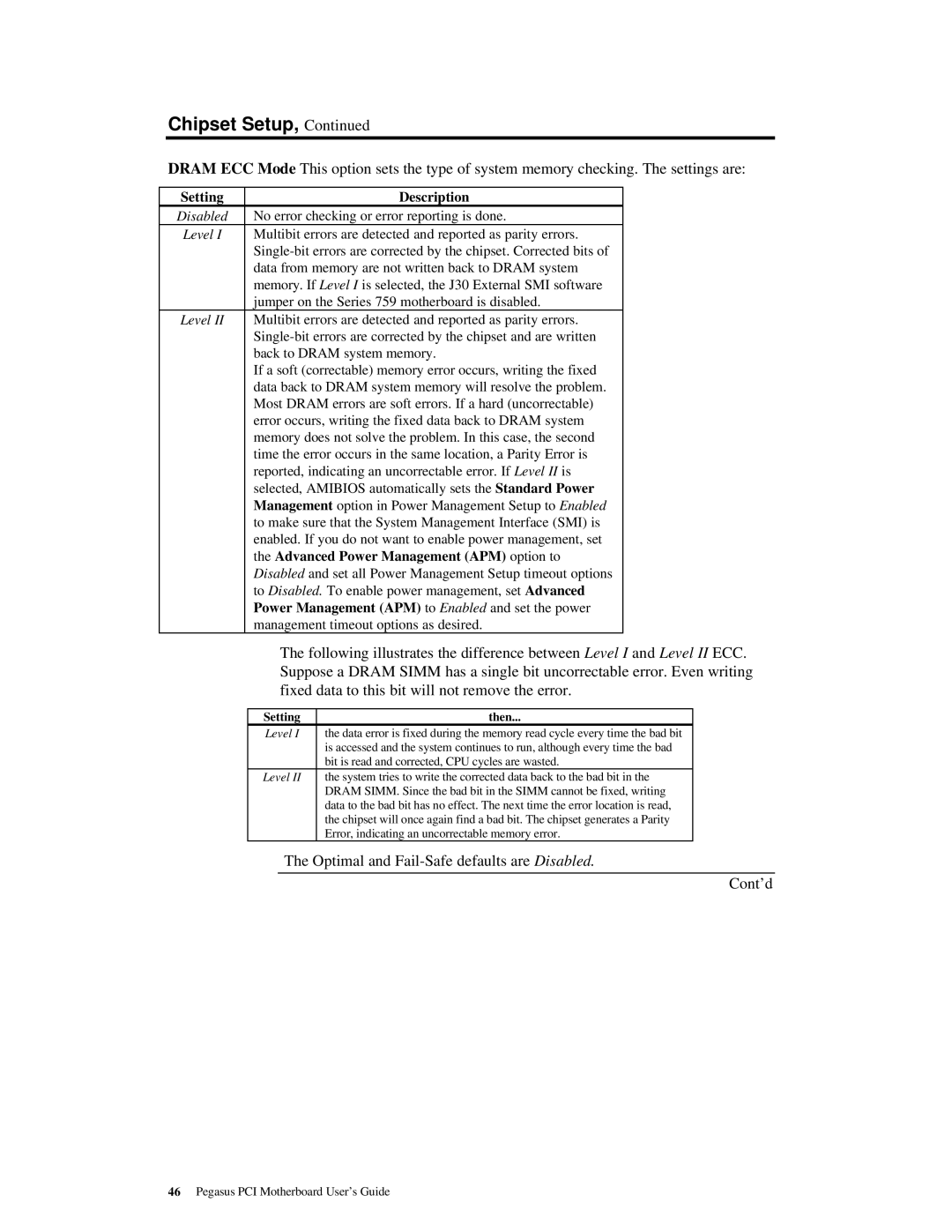
Chipset Setup, Continued
DRAM ECC Mode This option sets the type of system memory checking. The settings are:
Setting | Description |
Disabled | No error checking or error reporting is done. |
Level I | Multibit errors are detected and reported as parity errors. |
| |
| data from memory are not written back to DRAM system |
| memory. If Level I is selected, the J30 External SMI software |
| jumper on the Series 759 motherboard is disabled. |
Level II | Multibit errors are detected and reported as parity errors. |
| |
| back to DRAM system memory. |
| If a soft (correctable) memory error occurs, writing the fixed |
| data back to DRAM system memory will resolve the problem. |
| Most DRAM errors are soft errors. If a hard (uncorrectable) |
| error occurs, writing the fixed data back to DRAM system |
| memory does not solve the problem. In this case, the second |
| time the error occurs in the same location, a Parity Error is |
| reported, indicating an uncorrectable error. If Level II is |
| selected, AMIBIOS automatically sets the Standard Power |
| Management option in Power Management Setup to Enabled |
| to make sure that the System Management Interface (SMI) is |
| enabled. If you do not want to enable power management, set |
| the Advanced Power Management (APM) option to |
| Disabled and set all Power Management Setup timeout options |
| to Disabled. To enable power management, set Advanced |
| Power Management (APM) to Enabled and set the power |
| management timeout options as desired. |
The following illustrates the difference between Level I and Level II ECC. Suppose a DRAM SIMM has a single bit uncorrectable error. Even writing fixed data to this bit will not remove the error.
Setting | then... |
Level I | the data error is fixed during the memory read cycle every time the bad bit |
| is accessed and the system continues to run, although every time the bad |
| bit is read and corrected, CPU cycles are wasted. |
Level II | the system tries to write the corrected data back to the bad bit in the |
| DRAM SIMM. Since the bad bit in the SIMM cannot be fixed, writing |
| data to the bad bit has no effect. The next time the error location is read, |
| the chipset will once again find a bad bit. The chipset generates a Parity |
| Error, indicating an uncorrectable memory error. |
The Optimal and
Cont’d
46Pegasus PCI Motherboard User’s Guide
